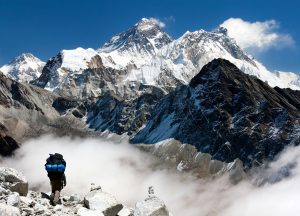Amid fears of a second wave of COVID-19, hundreds of climbers from many countries are all set to ascend Mt. Everest and other mountains in this spring season.
With its lockdown lifted and vaccine program underway – although it has yet to reach the general public – Nepal decided to reopen Mt. Everest and other mountains for this year’s climbing season. Icefall doctors are currently working to open the Everest route.
This year will mark the first ascents after a re-measurement and the announcement of Mt. Everest’s new confirmed height: 8,848.86 meters. It will also see the first climbs made during the coronavirus pandemic.
Like other sectors, mountaineering was badly hit in 2020, with zero climbing records on Mt. Everest last year. For comparison, 2019 was a crowded year, with 300 climbers and 15 deaths.
As of April 13, the number of people who have received permission to climb Mt. Everest this spring has reached 321, according to Mira Acharya, director at Nepal’s Department of Tourism, a government body mandated to regulate and issue permits for climbers. The number is likely to go up as the department is still examining the applications submitted by aspirants.
There are also some high profile climbers for this season. For example, Prince of Bahrain Sheikh Mohamed Hamad Mohamed al-Khalifa has received permits for climbing Mt. Everest. According to the Department of Tourism, the prince was the first person to receive permission this year.
In order to attract tourists, Nepal government has taken numerous measures, including relaxing its visa application process. Even amid fear of COVID-19, there were some climbers in the winter season, which sent out a positive message to the international arena.
But there are still fears of a second wave of COVID-19 transmission as the number of cases has jumped in India in recent weeks. The soaring case count in India is a matter of grave concern to Nepal due to their shared open border. Similarly, the number of infected people is going up in Nepal as well, although with daily cases in the 400-500 range it is still at roughly one-tenth of the country’s peak last fall. The upward trend, however, is likely to affect the climbing season.
Authorities say they are making efforts to ensure the safety of climbers. Unlike previous years, there are various rules related to health safety that climbers must obey.
The government is also preparing to deploy more medical teams in base camp and some places in between base camp and Namche Bazar, the town that serves as a departure point for Everest expeditions. “This is first time that we are deploying doctors in the field,” Acharya said.
Climbers must provide a negative COVID-19 test before landing in Nepal and should stay in quarantine for 14 days upon arrival. Climbers must also make a self-declaration stating that their health condition is fit for climbing.
This season, climbers will have to bear some additional costs because COVID-19 insurance is mandatory. Every climber, and all their team members, must purchase insurance for $5,000 before coming to Nepal.
Similarly, after videos and photos of the crowded final ascent sparked media coverage in 2019, there are some new provisions about photos and videos taken while climbing. Expedition teams can take photos and videos for their own private use but are not allowed to use those images for other purposes unless given prior approval from the ministry.
The reopening of climbing season is expected to boost Nepal’s tourism industry, which was badly hit by COVID-19.

































